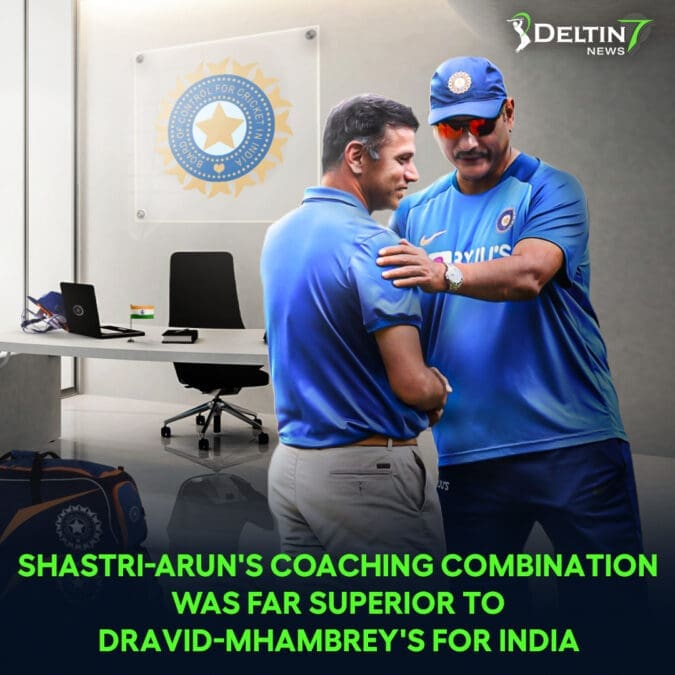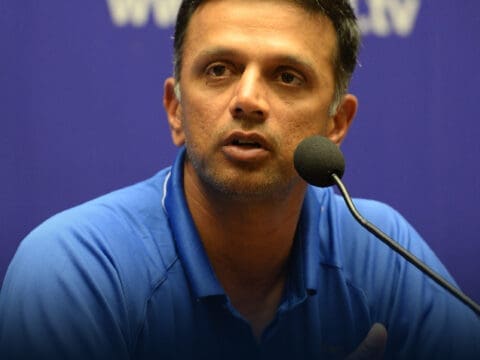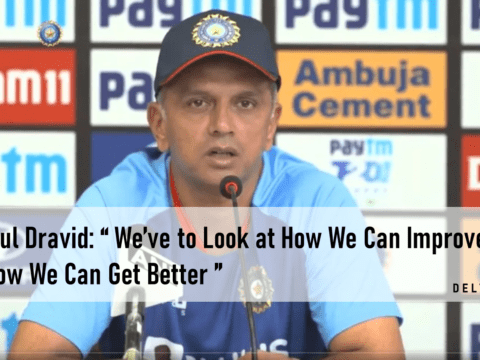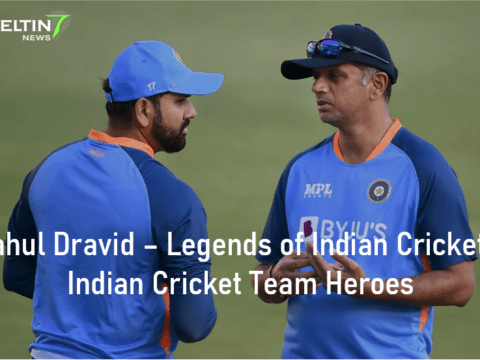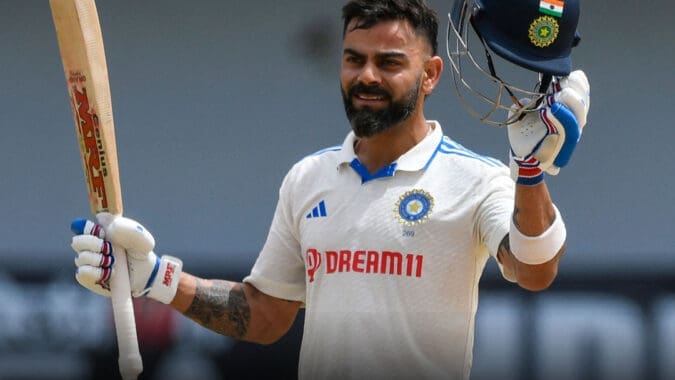
Shastri-Arun’s coaching combination was far superior to Dravid-Mhambrey’s for India
The role of coaching in cricket cannot be underestimated. A good coach can transform a team and elevate their performance to new heights. In recent years, two coaching combinations have grabbed the attention of cricket enthusiasts and experts alike – Ravi Shastri and Bharat Arun, and Rahul Dravid and Paras Mhambrey. These two coaching duos have had contrasting impacts on the Indian cricket team, with Shastri and Arun steering the team to significant victories, while Dravid and Mhambrey facing challenges in maintaining the team’s success. In this article, we will delve into the coaching styles, approaches, and their impact on the team’s performance.
Shastri-Arun Era: Stepping Stones to Success
Under the coaching leadership of Ravi Shastri and Bharat Arun, the Indian cricket team witnessed remarkable achievements, particularly in overseas tours. Shastri and Arun shared a vision of creating a formidable Indian bowling attack, one that could take 20 wickets consistently in any conditions. This approach was a departure from the conventional belief of bolstering the batting lineup with an extra batsman. Instead, they emphasized the importance of having a strong bowling unit to apply pressure on the opposition. Their strategy proved fruitful, leading to notable victories in Australia and England.
Building Consistency and Empowerment
Bharat Arun’s coaching philosophy centered around getting the bowlers out of their comfort zones and empowering them to explore their strengths and weaknesses. He believed in building a rapport with the players, gaining their trust, and challenging them to continuously improve. Arun focused on the basics of bowling, which have remained unchanged for over a century, while also incorporating variations to enhance the bowlers’ skill sets. This approach enabled the Indian bowlers to construct effective spells and put pressure on the opposition.
Shami’s Transformation and Emotional Support
One of the success stories of the Shastri-Arun era was the transformation of Mohammed Shami. Arun recognized that Shami’s bowling heavily relied on his run-up and balance at the crease. By fine-tuning his run-up speed and ensuring optimal balance, Shami regained control over his deliveries. However, it was not just technical adjustments that contributed to Shami’s improvement. Shastri and Arun played a crucial role in providing emotional support to Shami during a personal crisis, helping him channel his anger and frustration into his bowling. This mental fortitude propelled Shami to become a more focused and formidable fast bowler.
Ishant Sharma’s Technical Tweaks
Ishant Sharma’s career had reached a crossroads before the Shastri-Arun era. However, under their guidance, Ishant made significant changes to his approach. Arun identified a flaw in Ishant’s wrist position and release, which affected his ability to consistently trouble batsmen. By adjusting the angle at which Ishant approached the stumps and delivering from the center of the box, his in-dippers became more potent, forcing the batsmen to play him more often. This tweak revitalized Ishant’s career, making him a reliable bowler and a key asset for the team.
Bumrah’s Desire for Test Success
Jasprit Bumrah’s desire to excel in Test cricket was nurtured and supported by the Shastri-Arun duo. Bumrah’s unorthodox bowling action provided a unique challenge for the coaching staff. However, they encouraged his experimentation and gave him the necessary feedback to understand the intricacies of his bowling. Bumrah’s intelligence and quick learning ability allowed him to adjust his lengths and variations according to different pitches, making him a formidable force in the Indian bowling attack.
Dravid-Mhambrey Era: Challenges and Opportunities
The transition from the Shastri-Arun era to the Dravid-Mhambrey era brought new opportunities and challenges for the Indian cricket team. Rahul Dravid, known for his composed and resilient batting style, took on the role of head coach, while Paras Mhambrey assumed the responsibility of the bowling coach. However, the team’s performance under their guidance has been met with mixed results, raising questions about the effectiveness of their coaching approach.
Struggles with Consistency and Application
Rahul Dravid’s reputation as a disciplined and tenacious batsman did not translate seamlessly into the team’s performance under his coaching. The Indian batters, known for their attacking mindset, often fell prey to poor shot selection and failed to demonstrate the necessary application on challenging wickets. Dravid, who valued grit and determination, must have been disappointed by the lack of resilience displayed by some of his players.
Decline in Bowling Performance
One of the noticeable shortcomings of the Dravid-Mhambrey era has been the decline in the Indian bowling unit’s performance. Under the previous coaching duo, India consistently managed to pick 20 wickets while maintaining a tight grip on the opposition’s run-scoring. However, in recent matches, the Indian bowlers have struggled to defend moderate targets, conceding significant runs and failing to apply sustained pressure on the opposition. This decline has raised concerns about the effectiveness of the coaching strategies employed by Dravid and Mhambrey.
Need for Evolution and Fresh Perspectives
To overcome the challenges faced by the Indian bowling unit, Paras Mhambrey should consider taking inspiration from Bharat Arun’s approach. Arun’s emphasis on analyzing and rectifying mistakes through video sessions and open communication with the bowlers can prove valuable in addressing the team’s current shortcomings. Additionally, Mhambrey should explore opportunities to integrate young talents who have shown promise in the domestic circuit and the India A team. Evolution and rejuvenation are vital to ensure the long-term success of the team.
The Importance of Leadership Recognition
In the evaluation of coaching legacies, it is crucial to recognize the contributions of leaders like Ajinkya Rahane, who captained the team to a historic series win in Australia during the Shastri-Arun era. While the head coach plays a significant role in shaping team strategies and fostering a positive environment, the on-field leadership of the captain cannot be overlooked. Rahane’s calm and composed captaincy during a challenging tour played a pivotal role in India’s triumph.
Conclusion
Coaching plays a vital role in shaping a cricket team’s performance, and the impact of coaching duos like Shastri-Arun and Dravid-Mhambrey on the Indian cricket team cannot be understated. While the Shastri-Arun era witnessed remarkable victories and the development of a formidable bowling attack, the Dravid-Mhambrey era has faced challenges, particularly in maintaining consistency and performance. To achieve long-term success, the coaching staff needs to adapt, evolve, and address the team’s weaknesses. The future of Indian cricket relies on finding the right balance between experience and fresh perspectives, empowering players to realize their potential, and fostering a resilient and competitive team culture.

